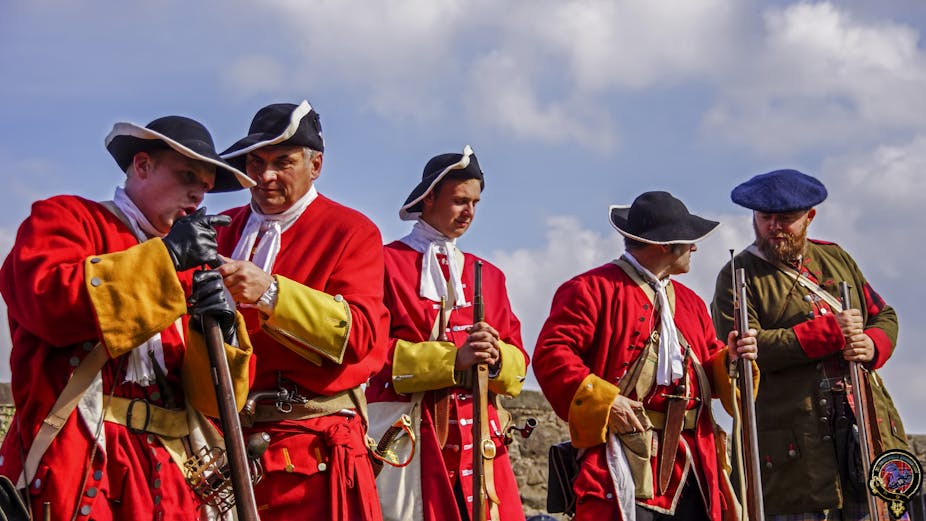Let us imagine: the prime minster of Scotland arranges an urgent summit meeting with his counterpart in England to pressure his southern neighbour not to leave the European Union. The Scots-Irish commercial union can withstand England’s unwillingness to join them in the eurozone, but leaving the EU would be a social tragedy for a close southern neighbour – as well as a perceived boon for Scottish business with the departure of substantial banking and financial activities from London to Edinburgh.
Newspapers meanwhile report that the Queen has made desperate phone calls to Downing Street pleading with the English PM not to leave the EU. She warned him it could encourage the break-up of the Union of the Crowns, which had united the Scottish and English monarchies in 1603 (while maintaining separate parliaments).
This parallel world is not one created on the back of a different outcome to last year’s Scottish referendum, but on something that nearly happened exactly 300 years ago. Few people realise how close Scotland and England came to heading in different directions only a few years after the Act of Union of 1707, which established the United Kingdom of Great Britain with one parliament. The event in question is the Battle of Sheriffmuir, which took place near Stirling in Scotland on November 13 1715.
Contested result
Sheriffmuir was the pivotal battle in a rebellion in which the supporters of the Catholic James Francis Stuart, the Jacobites, attempted to return the exiled Stuarts to the throne by force. Nicknamed the Old Pretender, James Francis Stuart was the son of James II (VII of Scotland), who had been deposed by William of Orange in the Glorious Revolution of 1688-9. Having taken Perth, the Jacobites were moving south, commanded by the earl of Mar, determined to change the course of history.

Sheriffmuir is sometimes confusingly declared a defeat for the Jacobites, but in fact was a tense and bloody draw between Mar’s troops and the loyalist soldiers under the chief of clan Campbell, the duke of Argyll – even though it was about 12,000 Jacobites against 4,000 government troops. On the same day, the government defeated Jacobite forces at Preston in the north of England, ending all hope of a successful rising. The Jacobites paused and then dispersed at the very time that the Old Pretender finally landed in north east Scotland. He lingered for only four weeks before returning into exile in France in the company of Mar.
The whole episode had very much alarmed the unionist and Hanoverian government in London. At the time the 1707 union was hated in England and Scotland, while King George I, who had been crowned in 1714, was an unpopular foreigner who could not even speak the language of his people.
A clear victory for the Jacobite army would have seen a collapse in the new regime enacted by the 1707 act and a Stuart restoration, such would have been the boldness of the Jacobite forces rushing south to London. The union would have been halted in its tracks and separate parliaments reinstated under one monarch. As for religion, a Catholic king James III and VIII would have had to practise his faith in private while supporting the Church of England. As James II and VII had found out to his cost, England as much as Scotland was not prepared to tolerate a Catholic king without firm guarantees to protect Protestantism.
So near and yet …
This whole what-might-have-been takes us back to James II and VII, the man who put the “James” into Jacobitism. Ever since he was replaced by William of Orange, he has suffered an exaggerated assassination of his reputation from a stream of Whig and neo-Whig historians. They condemn him for a weak personality, sheer incompetence, cowardice and authoritarianism – and Catholic authoritarianism at that.

We know that he was impressed by the Scottish parliament and opposed to the Anglo-Scottish union from his private “Advice to his Son” of 1692, first published more than 100 years later. William of Orange claimed in 1689 that nothing could be more sensible than a union with the two kingdoms “living in the same island, having the same language, and the same common interest of religion and liberty” – James II and VII completely rejected this view and knew William’s scheme would help encourage Jacobite patriotism.
In his “advice”, James stated:
It is the true interest of the crown to keep the kingdom of Scotland separate from England.
He said those who support union should be seen as “weak men, bribed by some private concern”. Indeed James would have voted Yes in last year’s referendum.

The former king’s son James Francis had the same views. Had he come to power on the back of a victory at Sheriffmuir, he would have ended the constitutional experiment that was the union of 1707. Perhaps in that alternate timeline, the Queen would have purred down the phone in the ear of the Scottish PM when she heard that an English referendum to leave the EU produced a No vote.

